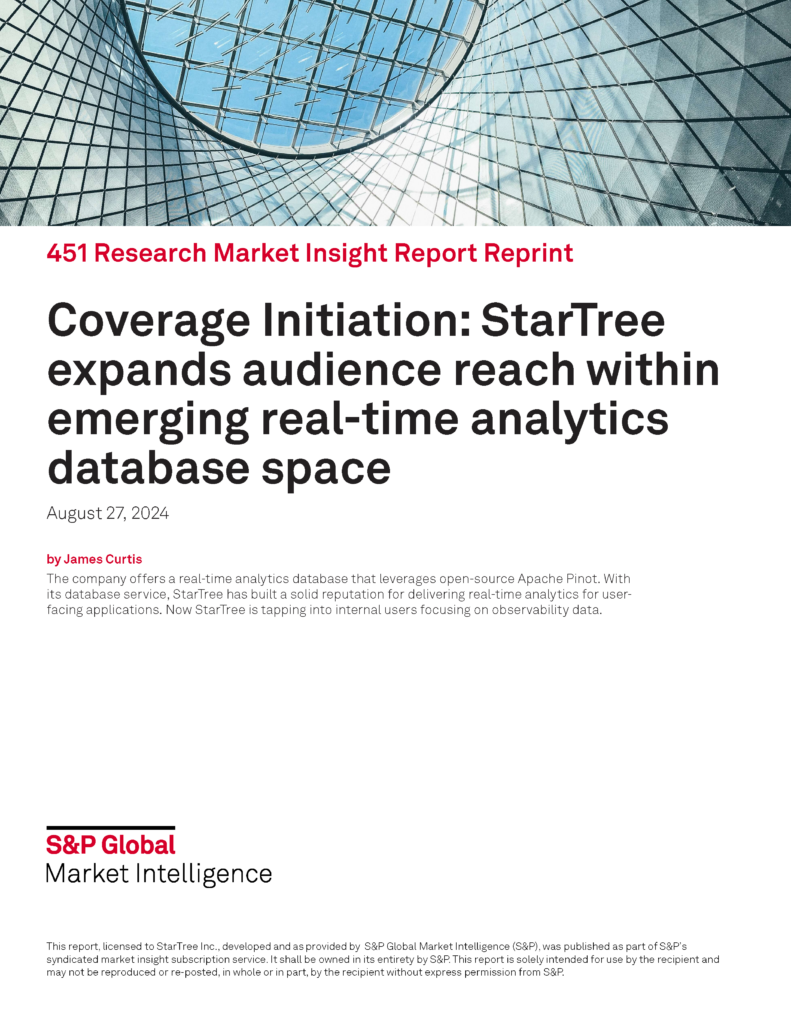Assembling an effective real-time observability stack requires careful evaluation. The ideal real-time analytics platform must balance high-speed ingestion, efficient storage, subsecond query performance, and seamless integration with existing pipelines and tools. Below we’ve put together a buyer’s checklist with key considerations to help assess and select the right platform for real-time observability at scale.
Challenges of monolithic observability platforms
As modern architectures grow in complexity and telemetry data volumes surge, many companies are moving away from monolithic observability platforms. Instead, they are building disaggregated observability stacks using open-source agents like OpenTelemetry and integrating best-in-class components for ingestion, storage, querying, and visualization. This modular approach offers greater flexibility, avoids vendor lock-in, and allows organizations to tailor solutions to their unique performance and cost requirements.
Evaluating real-time analytics solutions
Given the challenges outlined above, choosing the right real-time observability platform requires careful evaluation. Below are key considerations when assessing solutions:
Data ingestion and processing
The ideal solution should seamlessly integrate with industry-standard observability pipelines and ingest data at scale. It should support:
✅ OpenTelemetry and other standardized formats to prevent vendor lock-in
✅ High-velocity streaming from sources like Kafka, enabling continuous data flow without bottlenecks
✅ Support for multiple data types, including metrics, logs, and traces, without requiring separate storage systems
✅ High-throughput processing, handling 300,000+ messages per second at peak loads
Storage efficiency
Efficient storage is crucial for balancing cost and performance. A true real-time observability platform should offer:
✅ Columnar storage and specialized encoding to optimize query speeds
✅ Advanced compression techniques such as CLP for logs, reducing storage footprint without sacrificing performance
✅ Tiered storage architectures that leverage SSDs for hot data and object storage for cost-effective long-term retention
✅ Efficient handling of structured and semi-structured data, including JSON and MAP data types, without requiring preprocessing
Query performance
Fast query execution is the backbone of real-time observability. The platform should ensure:
✅ Sub-second response times for queries, even at massive scale
✅ Support for complex aggregations, joins, and filtering, allowing for advanced analytical workloads
✅ Optimized indexing techniques, such as inverted, sorted, range, JSON, and text indexes
✅ Concurrency handling, supporting hundreds of simultaneous queries without degradation
✅ Efficient execution of historical queries, ensuring past data can be analyzed as easily as live telemetry
✅ Optimized handling of high-cardinality dimensions, ensuring efficient queries across billions of unique data points
✅ Time-series query language support with the ability to run multiple query languages (like PromQL, M3QL, or custom languages) against the same data without requiring separate clusters
✅ Gap filling and data smoothing for time-series data without complex SQL workarounds
✅ Automatic time window inference that determines appropriate time granularity based on the query context
✅ Time-series joins and complex operations allowing for period-over-period comparisons and ratio calculations
✅ High QPS support for time-series workloads, handling thousands of queries per second with millisecond latencies, critical for high-volume alerting scenarios
✅ Support for exemplars to enable direct drill-down from metrics visualization to underlying trace data
Integration capabilities
Observability data is most useful when integrated into existing monitoring workflows. A real-time analytics platform should provide:
✅ Native integration with visualization tools like Grafana
✅ Support for PromQL, LogQL, and SQL, ensuring familiarity for existing teams
✅ Easy integration with existing data pipelines, reducing operational overhead
✅ Deployment flexibility, supporting cloud-native, on-premises, and hybrid environments
✅ Bring Your Own Cloud (BYOC) options, minimizing data egress costs
Real-world performance benchmarks
Enterprises that have adopted real-time analytics for observability have reported:
✅ 5x-150x faster query latencies
✅ Reduction of cluster size by over 500 nodes while improving query speeds
✅ Storage cost reductions of 50%+, achieved through optimized compression and storage
✅ Processing of 100+ TB of telemetry data daily, enabling seamless monitoring of large-scale applications
✅ Support for over 100,000 spans per trace, crucial for distributed tracing at scale
Learn more
Discover how to build an observability platform with open source. You can also read about disaggregating observability with Apache Kafka, Apache Pinot, and Grafana in our recent blog.
If you’re interested in how your organization can leverage a real-time analytics platform for observability, contact us for a demo of StarTree Cloud.

